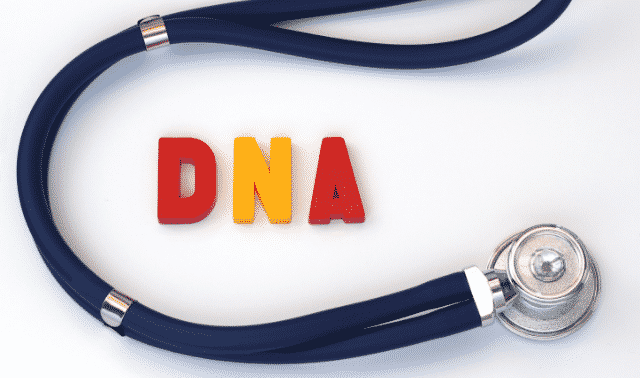
Your genes determine more than just your physical traits like hair and eye color. They also affect your risk of developing certain disorders, such as heart disease, stroke, diabetes and some kinds of cancer. Environmental forces and lifestyle choices influence your susceptibility to some medical conditions, too, but family history plays a major role. That’s why it’s important to create a family health history, which shows illnesses and medical conditions that affect you and your blood relatives.
If you know your family health history, you can take steps to minimize your risk of developing health disorders that run in your family. Your doctor may use a health history, along with other factors, to assess your risk for diseases. And if there’s a pattern of medical issues in your family, your doctor may refer you to a specialist to determine if you have inherited a form of the disease. Your doctor may recommend regular checkups or testing (such as a mammography or colonoscopy) at an earlier age, or even identify a condition that might not otherwise have been considered.
Use this guide to flesh out your family tree and collect important information about your medical makeup.
What to Include
Your health history should include at least information about three generations: grandparents, parents, uncles, aunts, siblings, cousins, children, nieces, nephews and grandchildren. You could add your great-grandparents, too, but the genetic makeup of more distant relatives doesn’t usually reveal much about your own risk. Still, it’s interesting to learn about your earlier ancestors’ health, how old they lived to be and their causes of death.
For each person you’re researching, determine at least gender, date of birth and major medical conditions, such as cancer, diabetes, heart disease, stroke and birth defects. Add other conditions, too, such as allergies, asthma, vision or hearing loss, and high blood pressure. Note the age of disease onset and pay particular attention to conditions that developed at an unusually young age or that affect multiple relatives. Some mental health and intellectual disabilities have a genetic component, too, so record conditions such as ADHD, alcoholism, bipolar disorder, dementia, Alzheimer’s disease and depression. For deceased relatives, indicate the cause of death and age at death.
To paint a more complete picture of possible influences on your relatives’ health, note if they smoke, exercise or are overweight. Also, record their ethnicity. Some diseases disproportionately affect certain ethnic and racial groups. For example, sickle cell anemia occurs most often in African Americans, and Tay-Sachs disease is most common in Ashkenazi Jews.
Health-History Records
A variety of records can shed light on your family health history, ranging from family diaries to mortality schedules in censuses. Here are nine key sources you should check for family health information.
1. Family Interviews
When possible, learn about your family’s health conditions straight from the source. When you interview relatives, explain you’re trying to find out if your family has a history of certain diseases or health conditions. Offer to share your findings with other family members so they (in turn) can share them with their doctors. At the same time, respect your relatives’ privacy and their right to confidentiality.
Family interviews give you the details you need, and add color and life to your ancestors’ stories. In 1976, I interviewed an 86-year-old great-aunt by mail. Recalling her childhood in South Dakota, Josie Huntington wrote about her Grandpa Cooley, whom she lived with: “I can just remember them. He was a small man, had a stroke and couldn’t talk. Was helpless in all ways.” In fact, she added, he never spoke during the last 10 years of his life. His obituary from 1895 says that his health had been failing for a couple of years, but it doesn’t mention the stroke.
2. Death Records
Death records are perhaps the most obvious source for health information. After all, your ancestor likely died from exactly the sort of condition you’re hoping to research. For example, my great-grandfather John W. Crume, a carpenter, died in 1909 at age 60 in Moorhead, Minn. His death record on file at the county courthouse says the cause of death was “tuberculosis, duration 12 years.”
Depending on the place and time period, death records may provide the age at death, the cause of death and the length of the illness. Some locales (such as towns in New England) began keeping death records in the 17th century, but some states didn’t require deaths to be recorded until the early 20th century. The FamilySearch Wiki has state-by-state articles that contain links to online records and indexes.
3. Obituaries
Newspaper obituaries sometimes give the deceased’s cause of death. My ancestor George L. Pennington, a farmer, died in Bridgewater, Maine, in 1911 at age 69. The Maine Newspaper Project hosts historical newspapers dating back to the early 19th century. Among them is The Aroostook Times where I found George’s obituary. It says he was “stricken suddenly with apoplexy” from which he died a few days later. A quick Google search reveals that the term apoplexy refers to paralysis due to a stroke. (Learn more archaic medical terms.)
Chronicling America, a free service from the Library of Congress, and the subscription sites GenealogyBank and Newspapers.com each have large collections of digitized historical newspapers. The Ancestor Hunt has links to free online newspaper archives.
4. Funeral Home Records
The funeral industry in the United States has its origins in the Civil War, when the bodies of dead soldiers needed to be preserved for the trip home. Since then, funeral homes have been a key part of burial services, and you can often find the name of the funeral home that handled your ancestor’s service in his obituary or death certificate. Use the Funeral Home Directory to find US funeral homes. Note that a defunct funeral home’s records may have been acquired by another in the same community.
Funeral home records often give the cause of death. My paternal grandfather had two brothers who died in Moorhead, Minn., and the local funeral home has records for both of them. They show that Carlos L. Crume died in infancy in 1904 of bronchial pneumonia. His older half-brother, a bartender named Thomas H. Crume, died in more dramatic fashion at age 30 in 1906: “shot thru the heart, murder.” Usually, the cause of death shown in funeral home records and government death records is the same. But John W. Crume’s funeral home record provides more detail. It says he died of “T.B. of the bladder with perforations.”
5. US Federal Censuses
The US federal census has asked a variety of health-related questions. The decennial censuses from 1850 through 1880 identified people who were deaf, dumb (i.e., unable to speak), blind or insane. The 1880 census also asked if the person was “maimed, crippled, bedridden or otherwise disabled.” Likewise, the 1910 census notes if the person was blind in both eyes or “deaf and dumb.” Federal census records are available on most subscription genealogy websites as well as on the free FamilySearch.
6. DDD Censuses
The 1880 US federal census included a separate schedule that asked questions of individuals with specific health or economic conditions. The language in these “Defective, Dependent and Delinquent” (DDD) schedules might make us uncomfortable today, but the schedules contain useful information about those who had mental or physical disabilities. If a person’s listing in the regular 1880 population census schedule has a notation about the person’s health, be sure to check the DDD schedules for more details. Ancestry.com has the 1880 Schedules of Defective, Dependent and Delinquent Classes for 21 states.
The seven supplementary schedules to the 1880 census cover: Insane Inhabitants, “Idiots,” Deaf-Mutes, Blind, Homeless Children, Inhabitants in Prison, and Pauper and Indigent Inhabitants. They all record each person’s name, age, gender, race and place of residence. The Insane schedule asks for the form of disease (such as mania, dementia or epilepsy), and the “Idiots” schedule asks for the cause of disability (such as meningitis or blow to the head). Both schedules record the names of institutions where the person lived, the length of stay and the year discharged. Both the Deaf-Mutes and Blind schedules ask for the cause, the age of onset, where the person had been institutionalized, the length of stay and the year discharged.
7. Mortality Schedules
Taken in conjunction with the regular federal population censuses, mortality schedules list people who died within one year preceding the 1850, 1860, 1870 and 1880 enumerations. Similar schedules exist for the 1885 federally funded census of Colorado, Florida, Nebraska and the territories of New Mexico and Dakota. These mortality schedules cover deaths that occurred from June 1 through May 31 in the year preceding the census date. They typically record the deceased person’s name, age, sex, race, marital status, birthplace, occupation, month of death, cause of death and number of days ill. The 1870 and 1880 mortality schedules show the corresponding family number in the regular population census.
FamilySearch, Findmypast and MyHeritage have the complete 1850 mortality schedules. Ancestry.com also has collections of mortality schedules: one of just transcriptions and another that features images of the original records.
8. State Censuses
State censuses also sometimes asked questions about health. Consult the FamilySearch Wiki for details about surviving censuses in your ancestor’s state or territory.
You might find that the health-related questions in state censuses vary by year. For example, the New York state censuses of 1855, 1865 and 1875 all record deaths occurring during the 12 months preceding the enumeration. However, the 1855 census doesn’t include the names of people who died; you’ll have to figure out who they were from the age and month of death. But the 1865 and 1875 censuses give the deceased person’s name, age, date of death and cause of death.
You may also have limited search options. On both Ancestry.com and FamilySearch, for example, you can search for a name in the regular population part of the New York state censuses, but the deaths are not indexed. You have to browse census pages to find lists of deaths, which usually follows each town’s regular population schedules.
9. Institutional Records
State hospitals usually keep detailed records of their patients, and surviving documents can provide insight into how your ancestors lived. One woman, Lillie Dell Theilmann, spent nearly 40 years of her life in an insane asylum. Records from the institution (later named the Stockton State Hospital) state this about Lillie: “She roams all over town, sleeps out of doors, talks very irrationally, etc. Excitedly refuses to answer questions. Mistakes people surrounding her as being her former enemies.” Lillie’s daughter also spent decades in the asylum, and both women died there.
Learn how to request information from old mental health records through Asylum Projects.
Related Reads
A version of this article appeared in the May/June 2019 issue of Family Tree Magazine.







